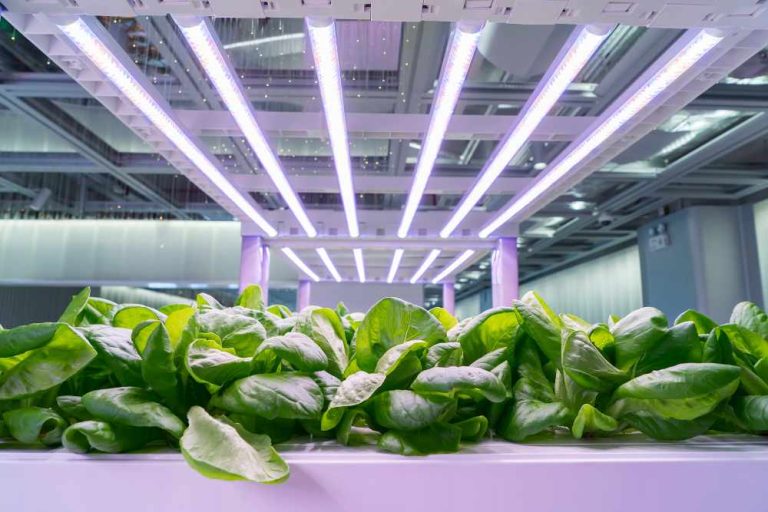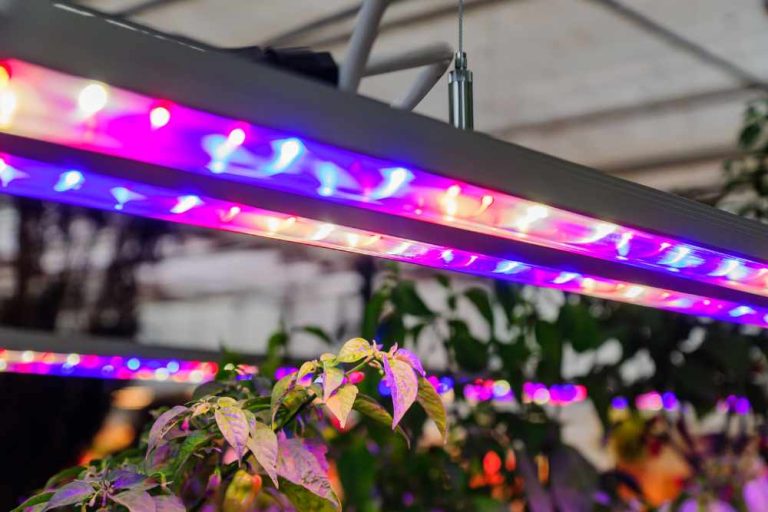Cheap Grow Lights for Vegetable Seedlings: Grow Your Own Vegetables on a Budget
Budget gardening is made easy by starting your own plants from seeds. Anyone who has attempted to grow plants from seed knows that having the right lighting is crucial for producing a lot of stocky, green seedlings. Attempting to grow seedlings on a sunny windowsill would be futile and time-consuming because most homes don’t have enough light for them.
Your seedlings won’t be able to reach the light source as they grow tall and lanky and produce too thin and weak stems if there isn’t enough light. Plants cultivated as seedlings under a grow light grow stronger and more vigorously than those grown without grow light.
Instead of bending over toward a window’s light, grow lights encourage seedlings to grow straight up. Here’s all you need to know to about grow lights for vegetable seedlings.
What is a Grow Light for Plants?
A grow light is a type of electric light that mimics the effects of sunshine. Photosynthesis, the process of turning sunlight, oxygen, and water into energy that supports plant growth, is a requirement for plants. You’ll need some extra light if you want to cultivate healthy seedlings and plants inside.
Red, blue, yellow, and violet are all colors that can be seen in natural sunshine. Grow lights are a common way to produce artificial light that closely resembles sunlight. While there are other lighting solutions available to Greenhouse and commercial growers, fluorescent or LED grow lights are sufficient for home gardeners to start seeds and develop vegetables indoors.
Are Grow Lights Necessary?
Light is essential for plant survival! Through photosynthesis, plants capture solar energy and transform it into chemical energy that powers their growth. The amount of light a plant receives typically directly correlates with how quickly it will develop. When there is insufficient natural sunshine for plants to grow, grow lights are a quick, effective solution to supplement their lighting needs.
Have you ever seen exceptionally tall seedlings or even bend in the direction of a window? They are extending to seek out more light. Taller does not always equal better in the seedling world! Vegetable seedlings that aren’t given enough light become leggy, weak, and lanky (also known as “leggy”) and are more likely to fall over or break. Without enough light, other indoor plants could find it difficult to flourish in terms of growth, production, or other factors.
Using grow lights indoors is one of the best strategies to prevent leggy seedlings and develop the healthiest, most profitable plants. a sunny window alone won’t usually be enough light for indoor seedling germination.
Most gardeners sow seeds for the upcoming summer and spring seasons during the winter when there are already few daylight hours. Seedlings will remain small, stocky, and powerful thanks to the abundant light that grow lights provide. However, the majority of houseplants can usually survive with just ambient light and bright windows.
Top 4 Things To Know Before Buying A Grow Light
1. Light Color
Color temperature is another name for light color, with excellent light denoting the blue end of the spectrum and warm light denoting the red end. The entire visible light spectrum, including all of the colors in the rainbow, is present in sunlight.
Red and blue light appears to be particularly important for photosynthesis, even though plants utilize the entire spectrum. Red light promotes blooming and vegetative growth, but too much red light will cause a plant to grow tall and spindly. Blue light controls plant growth, making it perfect for raising leafy plants and short, stocky seedlings (but too much can cause plants to become stunted).
Blue light controls plant growth, making it perfect for raising short, stocky seedlings and foliage plants (but too much blue light will cause plants to become stunted). The Kelvin value of a grow lamp can tell you what color it produces. Lamps with a Kelvin rating of 5000 will seem blue, while those with a 2500 Kelvin rating will appear reddish.
2. Types of Bulbs
Several lighting options are available, each with its benefits and drawbacks, including incandescent, fluorescent, LED, and high-intensity discharge (HID) bulbs. The greatest grow light to use will depend on the type of plants you want to grow and the location where you’ll be starting your seeds.
– Incandescent Bulbs
These include halogen bulbs, which are still common in most houses (although it’s become increasingly difficult to find them since retailers exclusively stock more energy-efficient lights like CFLs and LEDs).
Incandescent lights are a poor source of blue light but a good source of red light; therefore, plants growing under incandescent light will most likely become spindly.
Additionally, in relation to the quantity of light they emit, incandescent and particularly halogen bulbs generate a lot of heat, which makes it possible for plants to burn if they are grown too close to the bulb. In general, these are not the ideal lighting for developing seedlings.
– LED Grow Lamps
Light-emitting diodes (LEDs) emit light within a specific band, in contrast to other bulbs that generate light across the entire spectrum. The two bands of light that plants require red and blue are emitted by LEDs explicitly made for plant growth. People may not appreciate the purple light that appears as a result.
Because they don’t contain mercury, LEDs won’t break like glass. These bulbs are extremely energy-efficient and have a long lifespan (up to 5 times that of fluorescent lamps), but their price is significantly higher.
– Metal halide lights
Metal halide lamps generate a strong, bluish-white light that is suitable for plant growth. Plants are usually stocky and sturdy, and the foliage remains green and vigorous. Metal-halide lights are the most popular choice for serious indoor gardeners right now. Mercury vapor lamps produce a bluish, bright, often well-balanced light with high intensity. However, when used exclusively, they result in lanky, weak-stemmed plants. High-pressure sodium bulbs are typically employed to encourage flowering and fruiting.
– Cool white bulbs
Although they are a poor producer of red light, cool white bulbs are an excellent source of blue and yellow-green light. Under cool white bulbs, plants will grow stocky or even slightly stunted. Compared to blue and green light, warm white bulbs produce a lot more orange and red light.
When used alone, these bulbs produce tall, wiry plants. By mixing one cold white and one warm white bulb, you can typically obtain a satisfactory color balance while growing seedlings under two-bulb fluorescent fixtures.
3. Duration of Light Exposure
There is still a dispute on how many hours of supplemental light are optimum for beginning seeds and developing plants indoors.
In order to grow properly, the majority of garden plants and vegetables require at least 16 to 18 hours of sunlight each day. The usual wisdom was to leave lights on for 16 hours per day. Some growers, however, believe that giving seedlings a nocturnal break is unnecessary and that giving them constant light throughout the day helps their growth (although this advice might not necessarily be applicable to fully grown plants).
It’s obviously easier to leave your grow lights on all the time. Put the lamp(s) on a timer if you go for the 16-hour on, 8-hour off schedule so you won’t forget to switch them on or off.
3. Light Intensity
The bulb’s wattage and the distance between a plant and the light source affect how much light it receives. So, for instance, a brighter bulb placed further from the plant may produce the same amount of light as a dimmer bulb placed closer to the plant. The majority of seedlings planted in gardens need higher-intensity light to grow, while different plants have variable light intensity needs. When using a fluorescent lamp, put the leaves 2 to 4 inches away from the light source.
4. Size of Grow Light
When sizing grow lights, two factors should be considered: the size of the actual light fixture and the size of the surface area that the grow light is intended to illuminate appropriately. The amount of light that will be effective for you depends on your growing space, optimum setup, and quantity of plants.
Are seedlings or trays of microgreens being grown on a shelf? A shelf above would be a good place to suspend LED strips or fluorescent tube lights. Would you prefer to keep a few houseplants in a dim area of your living room?
Use a single powerful LED bulb or a modern lamp fixture that complements your interior design. In a grow tent, when beginning seedlings on a table in your garage or in any other large space, panels or boxy light fixtures are great.
Some grow lights cover an area far larger than the light fixture itself. Only those that are directly beneath the lights can adequately support the plants. Your plants will let you know if you’re uncertain. Seedlings on the margins of the light canopy usually bend inwards toward the brighter light. You could require a larger light in that situation. Or, to ensure that every plant has an equal amount of time in the spotlight, you’ll need to regularly rotate the seedling trays below the light every day or two.
Also, remember that before transferring seedlings to larger containers for outdoor planting, most gardeners pot them up at least once and perhaps twice from small seed-starting cells. Moving to a larger pot will also increase the amount of space the plants occupy under a light! That is to say, you might want greater (or more) lighting than you initially thought when you start off planting seeds.
How to Use Grow Lights for Seed Starting
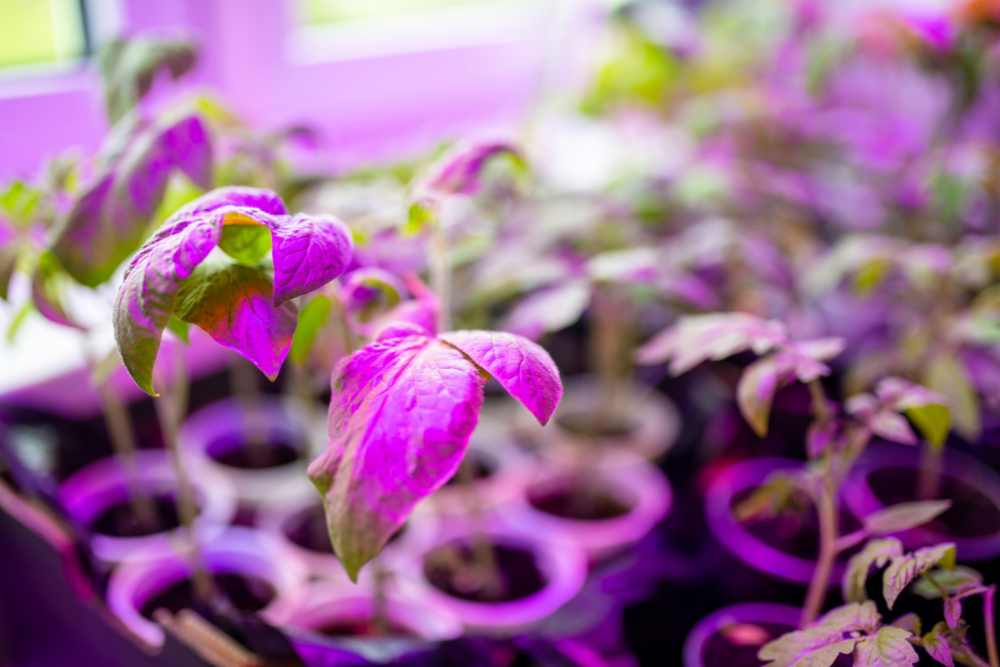
Choose a Site For Seed Starting
Consider where and how you will set up your grow lights and seed trays before planting seeds. You’ll need a fixture to screw bulbs into if you want them to shine above your seed trays. Seed trays must be fixed or hung above fluorescent grow light sources. You can keep a seed starting rack in a spare room or empty closet.
Install Grow Lights and Outlet Timer
Set up or install your grow lights in accordance with the manufacturer’s instructions at a suitable distance from where your seed trays will be. Before you plant your seeds, make sure they are functioning. So that they will switch on and off automatically when the time arrives, plug your lights into an outlet timer. When adjusting your grow lights, think about utilizing adjustable chains.
Sow Seeds
Fill your seed trays with growing media, moisten them, and then plant seeds in them in accordance with the packet’s instructions. So that you know what is planted and where to label your seedlings. To prevent them from drying out, cover seed trays with transparent plastic lids or cover them with a clear plastic tent.
Watch For Sprouts
Watch for signs of germination and keep an eye on your seeds to monitor moisture levels. After seeding, your seeds should start to sprout in one to two weeks. If utilizing a heat mat, sprouts might appear in a few days.
Turn on Grow Lights
Your grow lights should be turned on when the seedlings first appear. If seeds, like lettuce, need light to germinate, turn on the lights immediately. According to the type of grow light you have, make sure your lights are placed the right distance from the tops of your seedlings. The lamp should be positioned so that each seedling receives the same quantity of light. To ensure even germination of the seedlings, rotate your trays occasionally if that is not possible.
Monitor Seedlings
Maintaining a moist growing medium and keeping an eye out for problems will help you take good care of your seedlings. Your seedlings aren’t getting enough light if they appear lanky or bend toward the light. Increase the amount of time your seedlings spend exposed to light each day by moving the grow lamp closer.
Harden Off Seedlings
Before moving them outside, you must harden off or acclimate seedlings to outdoor conditions. Start a week or two before the transplant. On a warm day, let seedlings outside in the shadow for a few hours. Afterward, gradually increase their time spent outside and their exposure to sunlight. Keep seedlings inside when it’s windy or cold outside and the temperature is below 50 degrees. Place seedlings under grow lights when they are inside during the hardening-off period.
Transplant Seedlings
Your seedlings should live outside in your garden once they have been hardened off. Your grow lamp arrangement can be used to start additional successions of garden plants; you can try using them on your houseplants or store them until it’s time to start seeds indoors again the following year.
best cheap grow light for seedlings
1. Best bargain grow lights for seedlings: Durolux T5 Grow Light DL824 HO.
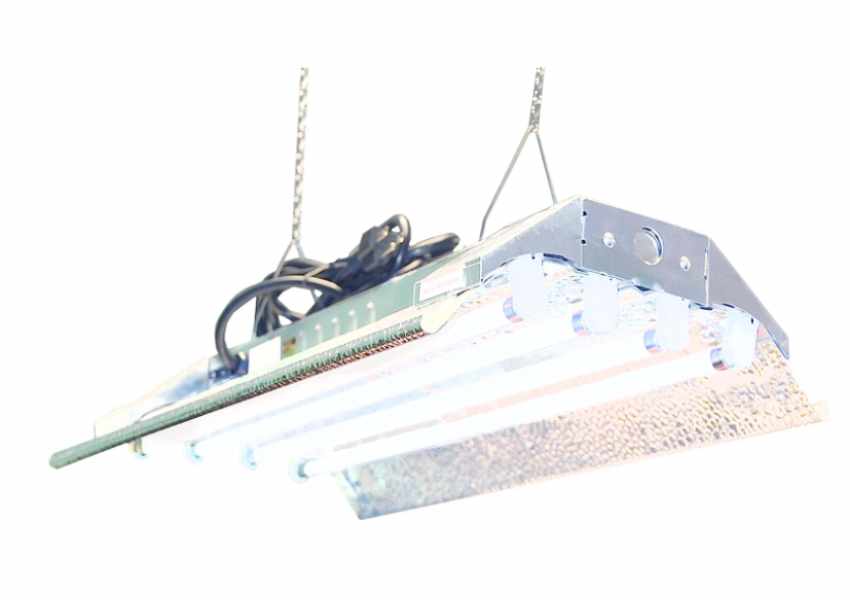
You may start growing healthy seedlings under these fluorescent lights while still having money left over in your budget for the necessities you’ll need once your plants mature. The four fluorescent bulbs produce an astonishing amount of light output concentrated in the blue light spectrum, essential for growing healthy seedlings.
Two power switches can control the light intensity on the device: one contains the inner two fluorescent tubes, and the other controls the outer two fluorescent tubes. This fluorescent grow light will be good for seedlings even though during different growth stages, LED lights provide developing plants with more beneficial light.
2. Best overall grow lights for seedlings: Mars Hydro TS-1000 3’x3′ Dimmable LED Grow Light.
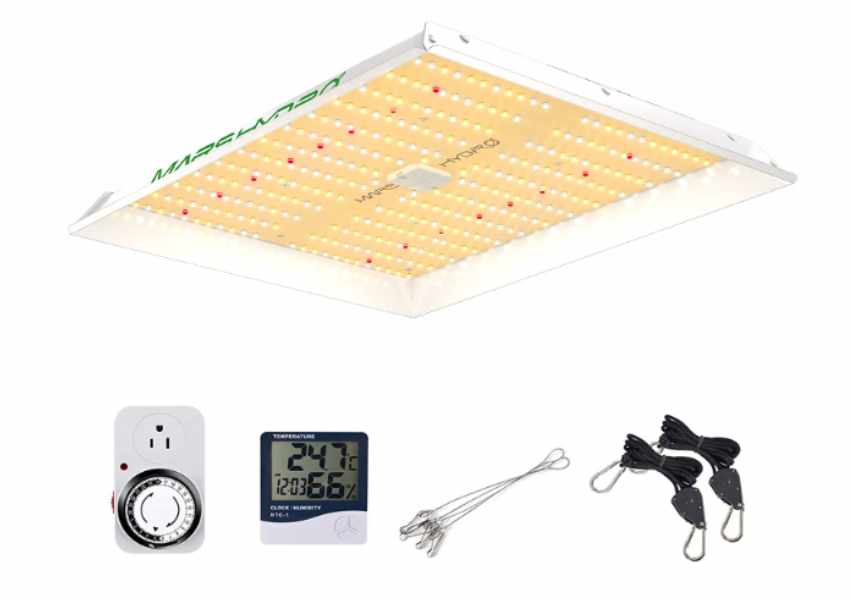
Mars Hydro’s TS-1000 well-liked and economical grow lamp in our list of suggestions. This grow light has been updated with a 120° refraction angle, heat dispersion qualities that minimize the need for cooling fans, and a fully dimmable switch to suit plants at all stages of growth. It includes everything you need to start seeds at home right away, including a thermohygrometer, a grow light timer, and all the hardware you’ll need to hang the lights and move them as your seedlings grow.
But the company’s commitment to customer service is what makes this light stand out from the competition. Mars provides a network of service centers around the US, a best-in-class 5-year service warranty, and guaranteed customer service response times.
3. Best all-in-one grow lights for seedlings: Gardeners Supply Company 3-Tier Grow Light Plant Stand
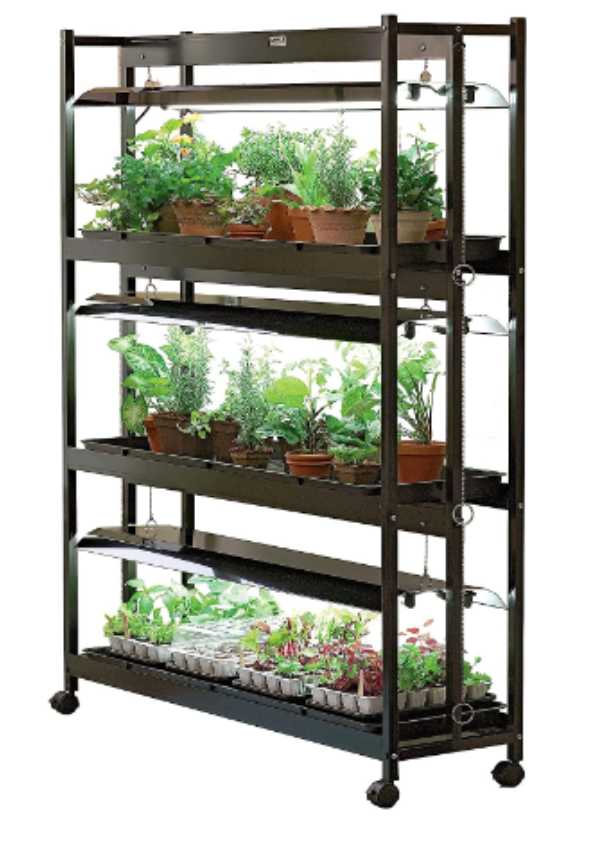
Check out this all-inclusive system from Gardeners Supply Company if you’re seeking a comprehensive system for growing seedlings inside. It has a solid metal frame, three racks with replaceable germination trays for each rack, adjustable lights for each tier, and wheels so you can move your grow station to accommodate variations in the amount of natural light in your area.
The fluorescent lights replicate natural sunlight and produce bright, warm light that is perfect for the early stages of plant growth and blends in with your home’s decor. This is an efficient and beautiful indoor lighting setup for growing seedlings, tending to a herb garden, or managing an indoor food garden in your kitchen.
4. Best beginner grow lights for seedlings: Hydrofarm Jump Start Grow Light System with 2′ T5 Grow Lights

Choosing the correct grow light might overwhelm new “green” indoor growers. It’s easy to select lights and rig them up to the ideal height with this beginner-friendly arrangement from Hydrofarm. It has a single T5 light mounted using an easy-to-use but reliable pulley system, allowing you to put it up almost anywhere on a flat surface. The 2′ model seen here (a 4′ version is also available) accommodates two seed starting trays side by side and will quickly fulfill its promise.
5. Best high-end grow lights for seedlings: Advanced Platinum Series P600 600w LED Grow Light

Even though more high-end competitors are hitting the market than ever, the Advanced Platinum Series grow lights remain the pinnacle of indoor growth at every stage. These lights deliver the maximum PAR/lumen output per watt of any other LED grow lamp, making them perfect for starting seedlings and raising plants to full maturity.
These lights also offer 100% of the light energy to plants that they can use. They emit a pure white natural light that reaches far into the light canopy of developing plants. Change to “bloom” when your plants are prepared to change to fruiting and flowering. Use the “veg” setting to start seedlings. Being composed of aluminum (the drivers and fans are not), these lights are rather weighty for their size.
People Also Ask
When to stop using grow lights on seedlings?
When your seedlings are outdoors, you should only cease using lights on them. They should be in front of the lights as long as they are inside the house.
When your seedlings are ready to be hardened off, you can leave the lights off while they are outside throughout the day. However, you shouldn’t entirely cease using them until after you’ve permanently relocated the seedlings outside. If you don’t constantly put them under the lights when you bring them inside, they’ll begin to become leggy.
How far should seedlings be from a grow light?
The distance between the seedlings and the grow light should not be great. At all times, it’s preferable to keep it 2–3′′ above the tops of the leaves. As a result, at first, your fixture will hang directly over (but never touch!) the tray’s plastic top. You will need to regularly adjust the lights to ensure they are always directly over the top after your starts get higher and you remove the lid.
However, the leaves must never touch the bulbs since they can ignite. Therefore, be sure to check on them daily and adjust the light as needed. This task will be significantly simplified if you use an adjustable hanger. If you see any of the edge seedlings are reaching or aren’t developing as quickly as the ones under the light, rotate the trays daily.
Can I use my LED grow light for seedlings?
Yes, you can undoubtedly use an LED grow light for seedlings. LED grow lights are a popular and energy-efficient option for providing artificial light to plants. LED light emits specific wavelengths of light that can be tailored to meet the needs of different growth stages.
When selecting an LED grow light for seedlings, ensure that it provides sufficient blue light, as mentioned earlier, to support their early growth. Additionally, consider the light intensity, coverage area, and any specific recommendations the manufacturer provides to optimize the light conditions for your seedlings’ success.
What is the proper light for seedlings?
The proper light for seedlings should encompass the full spectrum of light but with an emphasis on blue light during the early growth stages. Seedlings require ample light to trigger photosynthesis, promote sturdy stem development, and prevent them from becoming leggy or weak.
Blue light stimulates compact growth, encourages strong leaf formation, and supports the production of chlorophyll, which is vital for healthy plant growth. Combining blue light with a balanced spectrum that includes red and other wavelengths can further enhance the growth and development of seedlings.
How many watts for seedlings LED?
The wattage requirement for LED grow lights for seedlings can vary depending on factors such as the coverage area, light intensity, and the specific needs of the plant species you’re growing. As a general guideline, seedlings usually require lower light intensity than mature plants.
A range of 20 to 40 watts per square foot is often sufficient for most seedlings. However, it’s essential to consult the manufacturer’s guidelines or specific recommendations for the LED grow light you are using, as they may provide more accurate information tailored to their product’s light output and efficiency.
- 29 Bucket Gardening Ideas for a Lush, Compact Garden - October 30, 2024
- 20+ Chic Boho Bedroom Ideas for a Cozy and Stylish Retreat - June 20, 2024
- 12+ Modern Boho Living Room Ideas to Create a Unique Oasis - June 10, 2024


